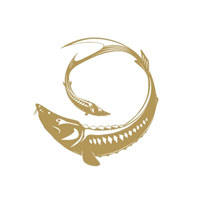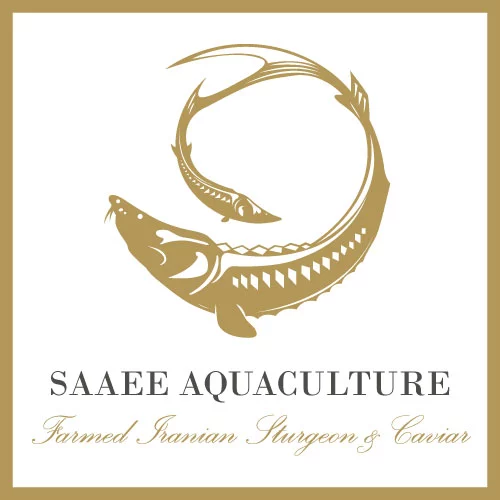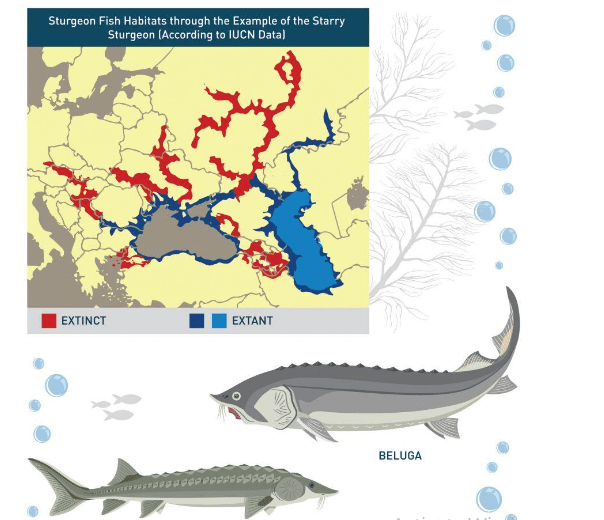
Who are the suppliers of caviar?
The main suppliers of caviar are the seas, including the Caspian Sea, the Black Sea and the Azov. But today, due to a series of factors such as physicochemical changes in water (including rising river water temperatures, increasing metal pollutants, toxic, etc...), environmental pollution, destruction of spawning place, sturgeon and etc...The process of reproduction of sturgeon has been severely disrupted and as a result has reduced the reserves of this species of fish and subsequently the production of caviar in this valuable species.
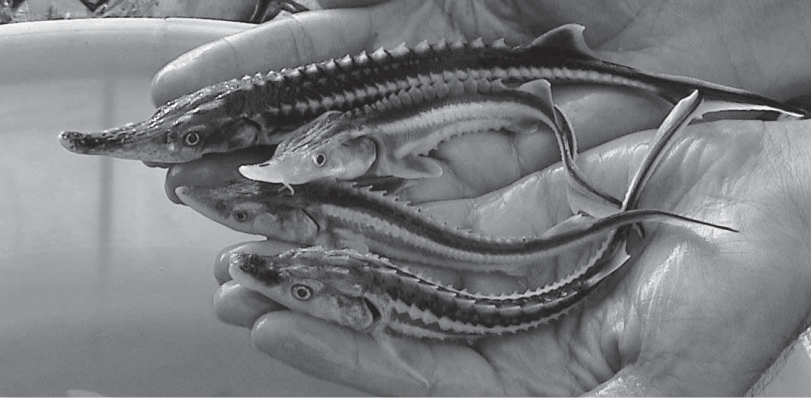
The population of the European sturgeon (Acipenser sturio) decreased most dramatically. Nowadays, this species is listed in the IUCN Red List of Threatened Species, with its population in a critical state. A few years ago, its entired Black Sea population was believed to have died out.
For the above reasons, today the human has started artificially breeding sturgeon in order to extract caviar, meat and rebuild stocks. cultured caviar is completely similar to natural sturgeon (extracted from wild fish) in terms of appearance, quality, taste. And the diagnosis of culturing and its naturalness is completely specialized and ordinary people are not able to distinguish between these two types of caviar.
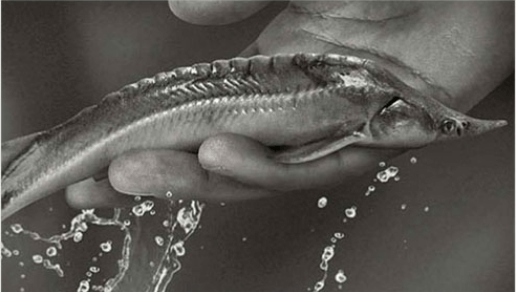
Thise picture show transitions to new life stages and indicate whether the habitat for each life stage contains freshwater, brackish water, or salt water, it’s the life cycle of sturgeon fishes.
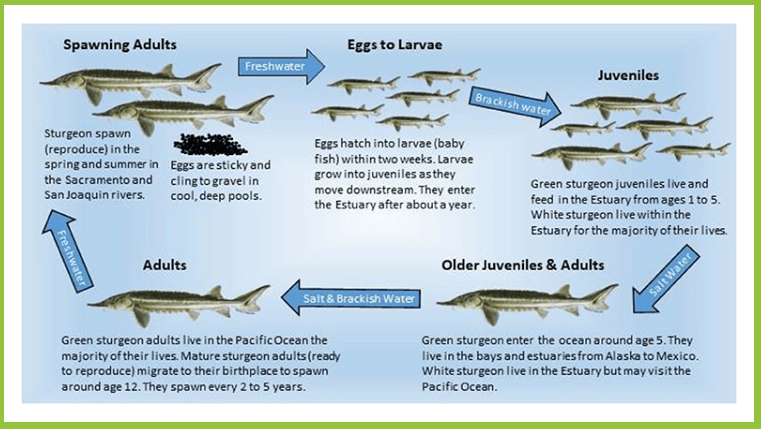
What is caviar ?!
In the meaning and concept of caviar, it is stated that caviar is actually a Persian word and a metamorphosis of the word "khavar" meaning small egg and is known as black pearl. Caviar in its official introduction is described as sturgeon eggs and one of the most expensive and valuable foods in the world. Caviar or black pearl is not found anywhere in the world and all world caviar markets are known as Iran.

The nutritional value of caviar
Caviar is a delicious and precious food that is very energetic and invigorating. Caviar compounds include protein, fat, vitamins, water, enzymes and various hormones.
The high percentage of protein and essential amino acids in caviar makes it a vital, valuable and expensive substance.
Caviar is rich in vitamins B12-B6-B2-C-E-A, folic acid and pantothenic acid and other minerals such as iodine and phosphorus.
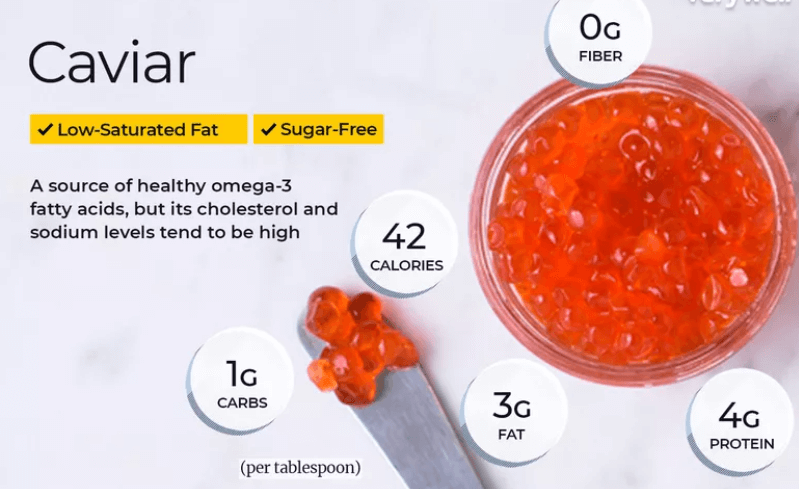
The presence of these vitamins is able to restore the lost strength of people during recovery from illness or after major surgeries and infectious diseases.
Caviar improves general metabolism and strengthens the immune system and is important in relieving the effects of anesthesia.
It also contains significant amounts of unsaturated fatty acids such as linolenic acid and idorachidonic acid, which are important factors in maintaining cardiovascular health and preventing complications such as heart attack.
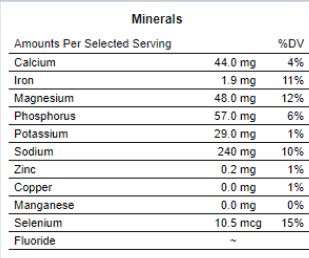
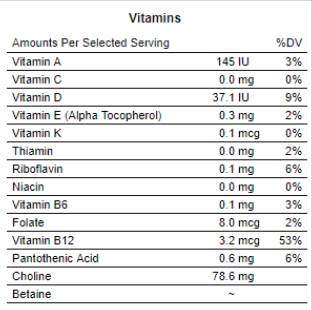
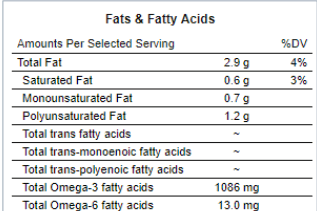
Living fossils
Sturgeon are called living fossils because they have changed very little over time. Fish you would recognize as sturgeon first appear in the fossil record during the Triassic period (245–208 million years ago) and their appearance has not changed much since then. However, the fish that sturgeon evolved from are very different from the sturgeon we see today. A major difference is the sturgeon’s skeleton. Sturgeon ancestors had skeletons composed of bone, like the human skeleton. But, over time, the material of the sturgeon skeleton changed from bone to cartilage, like your nose and ears. Although most of the sturgeon skeleton is made of cartilage, sturgeon do have some bones in their bodies. Parts of the skull and pectoral fins are bone, and they have bony plates on their skin called scutes. Scutes act as armor. Sturgeon have five rows of scutes that run along their bodies.
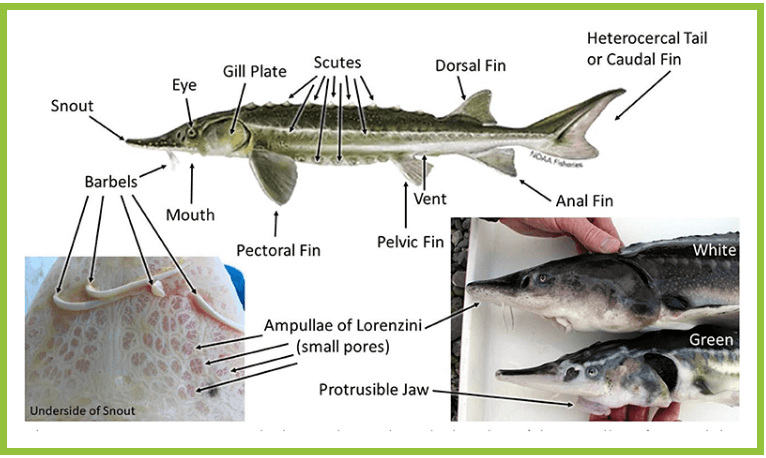
How is caviar harvested?
harvesting is the process of extracting unfertilized fish eggs (roe) from sturgeon fish. When extracting fish roe from sturgeon, there are two main processes: the classic harvesting method and the humane harvesting method. The classic method kills the fish, while the humane method keeps the fish alive.
Are fish killed for caviar?
the answer is usually an unfortunate "yes".
With modern advances in no-kill caviar technologies, it is possible to extract caviar without having to kill the sturgeon, but many farms still use the classic harvesting method for a very specific reason - preserving the quality and consistency of the caviar.
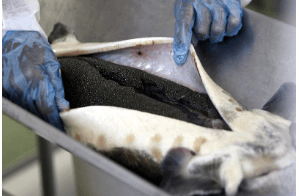
What fish makes caviar?
In order to be true caviar, the fish roe must come from the sturgeon fish (the Acipenseridae family), but oftentimes, people consider roe extracted from other fish as caviar too. The reason for this discrepancy is because the United States allows any salted-cured fish roe to be labeled as caviar. The rest of the world defines the word “caviar” as salted-cured roe that is solely from sturgeon fish. These sturgeon fish could be, but are not limited to:
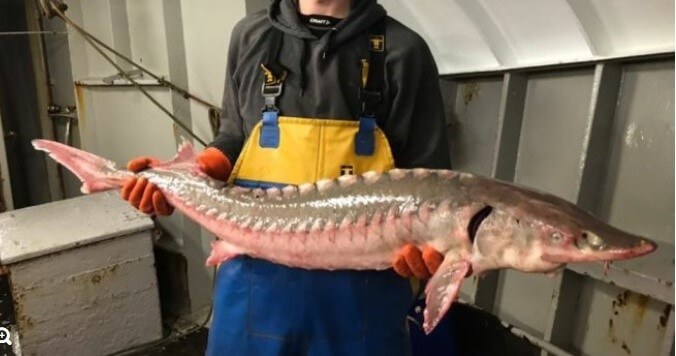
- Beluga Sturgeon
- Kaluga Sturgeon
- Russian Sturgeon
- Adriatic Sturgeon
- Persian Sturgeon
- Siberian Sturgeon
- Shovelnose Sturgeon
- White Sturgeon
- Sterlet Sturgeon
- And many more..
How is caviar produced:
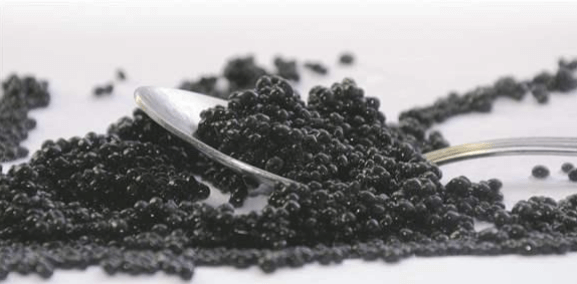
First, the ovaries are removed from a sedated female sturgeon and passed through a sieve to remove the membrane. Freed roes are rinsed to wash away impurities. Roes are now ready to become caviar by adding a precise amount of salt for taste and preservation. The fresh product is tasted and graded according to quality.
The eggs can account for 15% to 18% of the weight of the sturgeon. At this stage, the fish are typically at least a meter in length. Interestingly, there is no visual way to externally determine if a fish is male or female. For this reason, high frequency ultrasound is needed to determine not only the sex of the fish but also the egg development within the fish. Once the fish are sedated, high frequency ultrasound is used to evaluate the sturgeon’s ovaries, or row sacks, and to evaluate the egg production in each fish, one at a time. Small biopsies are also taken to visually observe the egg quality, including color and size. The color of the eggs in each fish varies, and there is no way to predict it. When ready for harvesting, the sturgeon will contain tens of thousands of eggs. At seven years of age, only about 10% to 20% of fish are typically ready for harvesting. Fish that are not yet ready are added back into the tank for another year of growth.
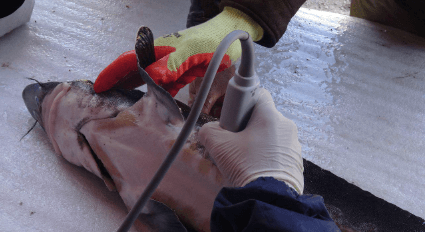
During the next processing step, the fish are purged in clean water tanks. This step is important to remove off-flavors. It is also important that the fish are not stressed at this or any stage of their growth. If the fish are stressed, they will reabsorb their eggs and need to go back into the growth chambers for another year or two to produce them again. It is at this stage that the processing methods overlap for commercial fresh and farmed caviar. The fish are rapidly stunned, and the two ovaries are removed by a process called “stripping” that extracts the caviar through a small incision in the fish wall. Alternatively, the caviar can be extracted by performing a cesarean section, which can then be stitched up, allowing the female to continue producing roe. The third process for removal of the roe is by massaging the eggs out of the fish.

Caviar is often presented on lightly buttered or dry toasts, and unsalted crackers or bread. You can also use the traditional Russian way and eat it with Russian pancakes called blini. There are some traditional garnishes for caviar: sour cream, fresh herbs, chopped onions and crumbled, hard-boiled eggs.
How to serve and eat caviar:
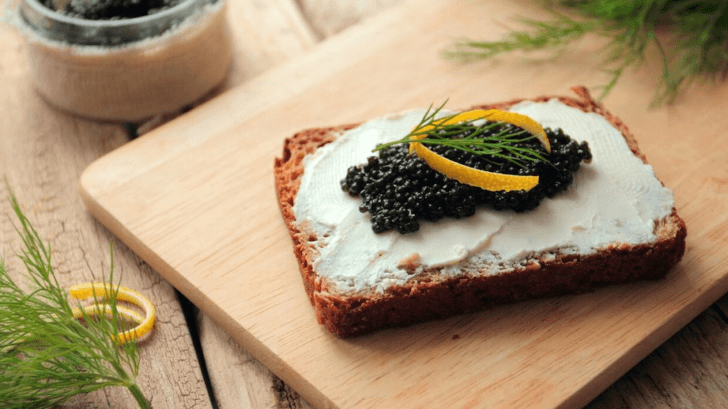
Caviar is often presented on lightly buttered or dry toasts, and unsalted crackers or bread. There are some traditional garnishes for caviar: sour cream, fresh herbs, chopped onions and crumbled, hard-boiled eggs.
The very fragile eggs are then chilled and gently removed by hand from the membrane by rubbing the eggs against a mesh screen. The tissue is then removed for composting. The eggs are next rinsed repeatedly with cold water to wash away impurities, broken eggs, and membrane residues. Additional removal of crushed eggs and impurities is achieved by manual removal, using tweezers. The pure eggs are then poured into a fine mesh colander to remove the water.
The caviar is then weighed carefully and salted. Very fine salt is used in the process, and its addition is critical for optimal flavor and shelf life of the caviar. Lightly salted caviar is called “malossol” and has a salt content of less than 5%. Most high-quality caviar contains less than 3% salt. Caviar with a salt content up to 8% is called salted caviar or semi-preserved caviar, and its flavor is less fresh. If salt is added at greater than 10%, the product is called “payusnaya” and forms a jellylike cake that can be kept for three months.
When and how to store caviar:
Caviar is typically aged for three months. Aging is critical for the final product flavor and for caviar to develop subtle fragrance notes. Longer aging is sometimes used. Caviar is perishable and requires refrigerated storage. Fresh caviar can be stored for two to four weeks. Caviar can also be pasteurized to extend shelf life and allow for storage times of up to a year at room temperature. Pasteurization is known to reduce quality in terms of final product texture and flavor, but it improves food safety. Other caviar preservation methods include freezing and drying, both of which extend shelf life.
